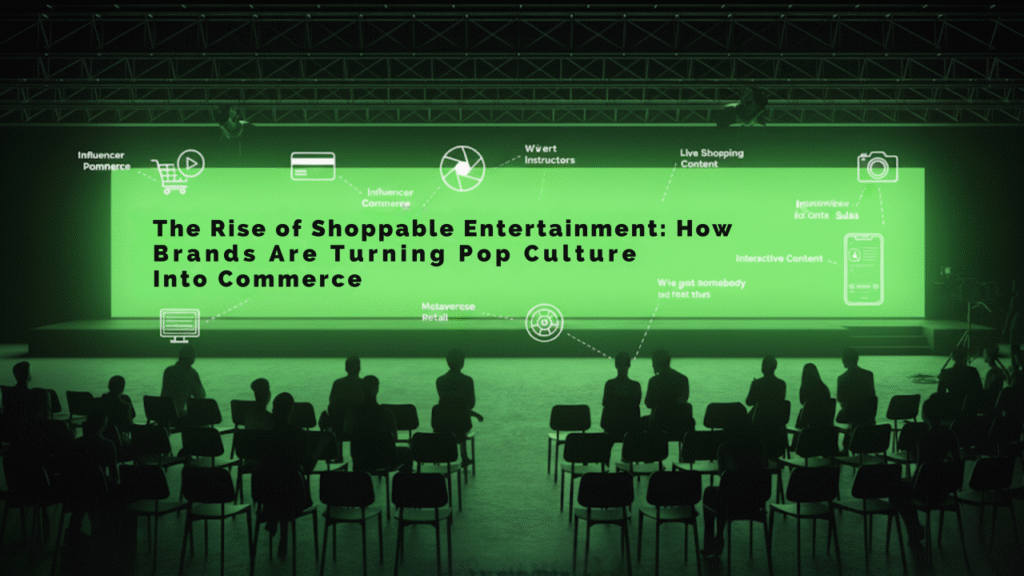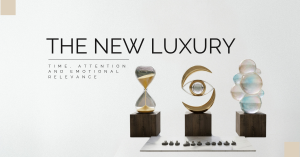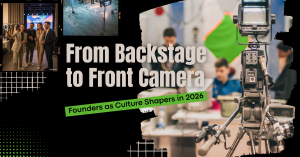Pop culture has always influenced what people buy. Back then, discovery often required effort, such as Googling an item, scouring stores, or hoping a magazine spilled the details. But in 2025, this has reached a whole new level. This new level is called the era of shoppable entertainment, where the boundary between what we watch and what we purchase is collapsing.
Entertainment is no longer just about watching, listening, or scrolling. Increasingly, it’s about shopping. The shows we binge, the music videos we play on repeat, and even the viral TikToks in our feed are becoming storefronts, seamlessly blending culture with commerce. This is the rise of shoppable entertainment, and it’s changing the way consumers discover and buy products.
Why Now?

There are several forces are driving this trend:
- The TikTok Effect – TikTok has normalized the idea that a piece of content can inspire instant purchases. Hashtags like #TikTokMadeMeBuyIt have created viral sales surges for everything from skincare to kitchen gadgets.
- Consumer Expectation for Instant Gratification – Audiences don’t want to hunt for what they saw in a show or video. They want it available instantly, without leaving the platform.
- Technology Integration – Platforms like YouTube and TikTok now offer built-in shopping features. Streaming services and e-commerce platforms are experimenting with interactive product placements.
- The Culture-Commerce Loop – Pop culture no longer just inspires consumer behaviour, it monetizes it in real time.
How Brands Can Tap Into Shoppable Entertainment

The rise of shoppable entertainment opens up massive opportunities for marketers, but it requires rethinking traditional campaign models. Here’s how brands can lean in:
- Turn Content Into Commerce Instead of separating “entertainment” from “ads,” brands should design campaigns that naturally invite shopping.
- Partner With Pop Culture Creators Creators are the frontline of shoppable entertainment, as their audiences already look to them for recommendations. The key is authenticity, the placement should feel natural, not forced.
- Build Interactive Experiences Think beyond passive ads. Livestream shopping events, gamified campaigns, and virtual try-ons allow audiences to engage with products in a way that feels fun. Brands in beauty and fashion are already leading the way, but there’s room for sectors like food, tech and travel to experiment.
- Own the “Pop Culture Moment” Shoppable entertainment thrives on cultural relevance. If a series, event, or trend is capturing attention, brands should ask: how can we make ourselves instantly shoppable in this moment? For example, when Beyoncé wore silver outfits during her Renaissance tour, fashion brands rushed to spotlight similar styles with easy “shop now” options.
The Risks of Overdoing It
While the potential is huge, brands need to tread carefully. If every scene, song, or video becomes a storefront, consumers may feel overwhelmed or cynical. The magic of shoppable entertainment lies in balance, where products should feel integrated into the story, not an interruption of it.
The Takeaway
Shoppable entertainment represents the next evolution of marketing, a world where pop culture doesn’t just influence commerce but is commerce. For brands, this isn’t about slapping shopping links onto content. It’s about understanding how people consume culture, and creating experiences where entertainment and shopping feel like one seamless journey.
The brands that get this right won’t just ride trends, they’ll sit at the intersection of culture, creativity, and commerce, turning every moment of inspiration into a moment of transaction.




